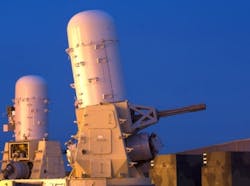Navy asks industry for help in developing a new generation of military tactical data links
Data link technologies developed in the ATDL program also develop technologies that improve military communications networks at the forward edges of battlefield areas. These technologies should be mature enough for future acquisition programs.
Among the goals of the ATDL program is to increase the number of battlefield nodes that can be connected, as well as increase throughput of tactical data links to improve distributed command and control, situational awareness, navigation, and cooperative integrated fire control. The idea is to improve connectivity and collaboration among shooters, sensors, and weapons, Navy officials say.
Current tactical communication capabilities have limited throughput and scalability, insufficient anti-jam) and low probability of exploitation capability, as well as unacceptable delay times in communications and high wait times to join the network, Navy officials say.
Navy leaders are particularly interested in advanced tactical data link capability for the E-2D Hawkeye carrier-based maritime surveillance aircraft, the F/A-18G Growler electronic warfare jet, the F-35 joint strike fighter, and unmanned aerial vehicles (UAVs).
Companies interested in participating in the ATDL program should respond to ONR no later than 15 June 2011. For questions or concerns, contact ONR's Gordon Jaquith by phone at 703-696-7831, or by e-mail at [email protected]. Also contact the Navy's Vera Carroll by phone at 703-696-2610, or by e-mail at [email protected].
More information is online at https://www.fbo.gov/spg/DON/ONR/ONR/ONRBAA11-021/listing.html.
